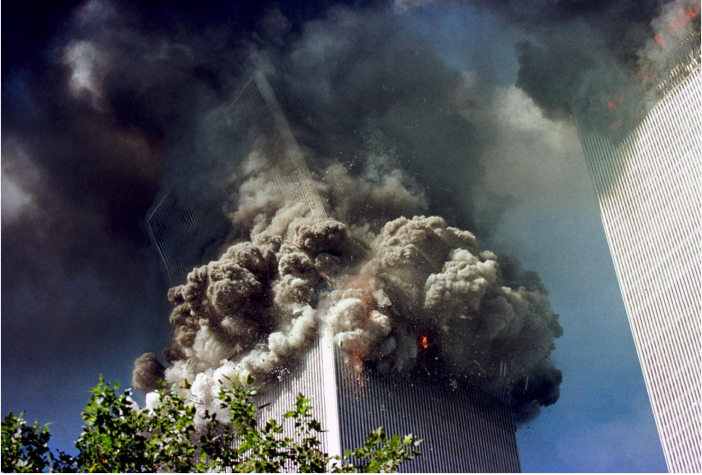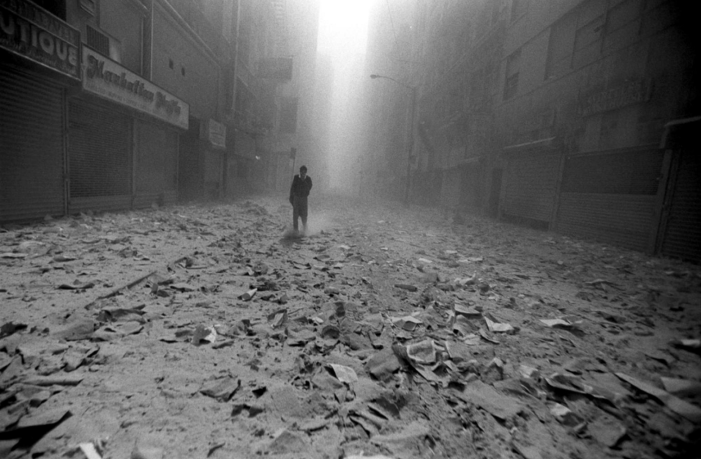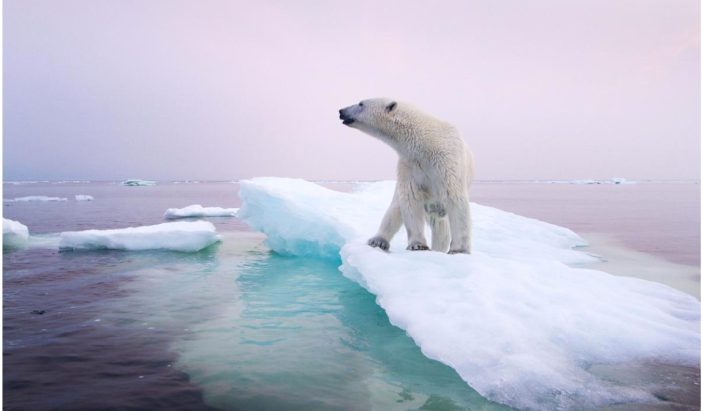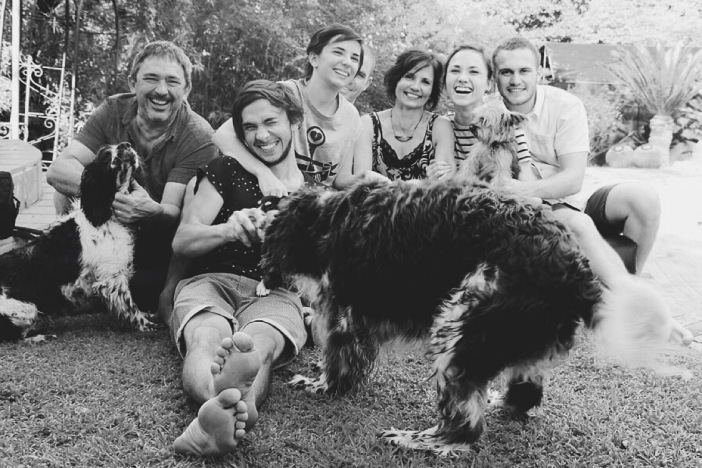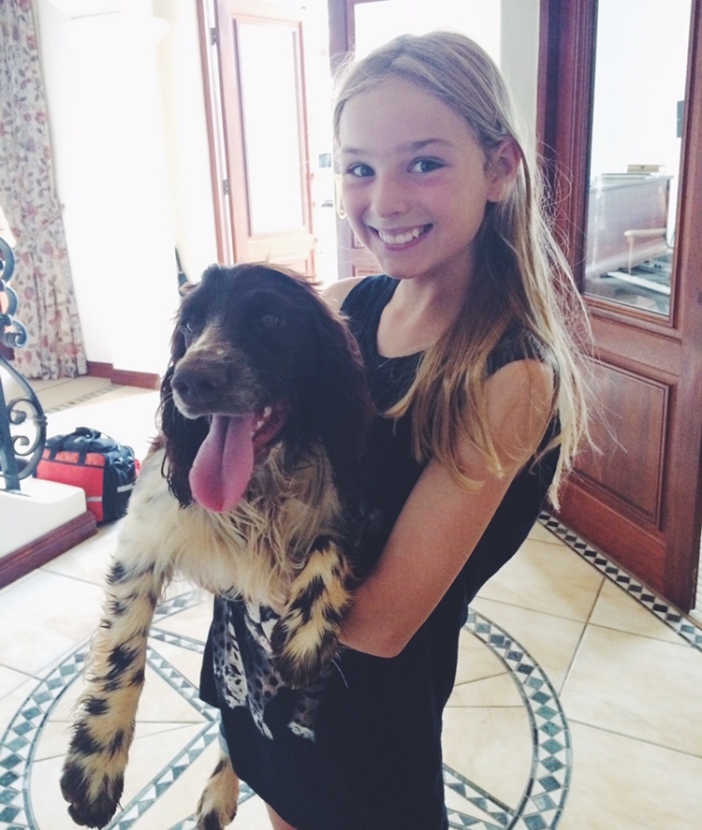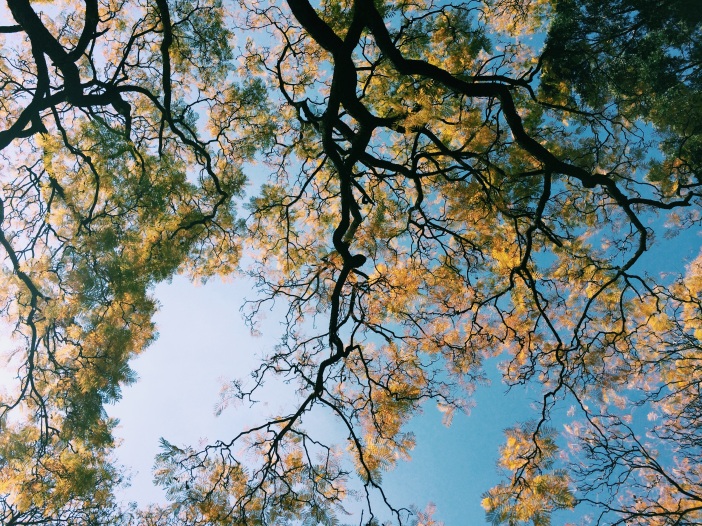
As much as we like to deny it, we are not the only living organisms that inhabit this earth. We, as human beings, are not the only ones with stories to tell. We neglect to acknowledge the secrets trees are more than willing to divulge – narratives that are intertwined with our very existence.
According to Joanna Dean, there are four main narratives concerning trees: the narratives of service, power and heritage along with the counter narrative of the unruly tree. This post focusses on these narratives and attempts to fully extract meaning from them through means of a photo elicitation. Photo elicitation, simply put, is an interview that makes use of photographs in order to elicit a more thorough, “comprehensive” (Tinkler, 2013:175) response from the person being interviewed. The use of photographs in interviews serves as an icebreaker, easing the tension between both parties in the interview, as the interviewee generally feels like the attention has been shifted from them. Photographs alleviate the pressure caused by an onslaught of prying questions. It also stimulates “people to talk about what they know, think, experience, feel and remember” (Tinkler, 2013:178), acting as a stimulant for the recollection of important data that might have been left out, because it seemed irrelevant.
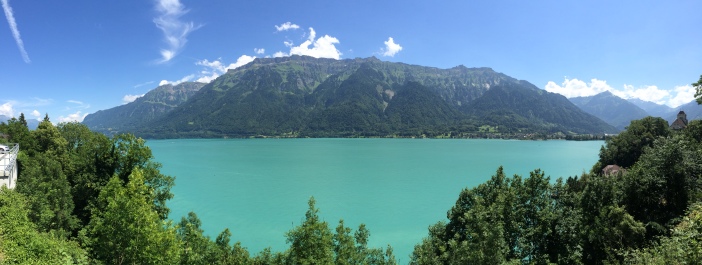
The first tree narrative is that of service. Trees are “selflessly providing services to the human residents of the modern city” (Dean, 2015:162), supplying us (and other living organisms) with shade, shelter, food and oxygen – fulfilling needs we take for granted every day.
My family and I visited Switzerland in July last year (2015), during the summer. The lakes are lined with an abundance of trees that serve a very important purpose to tourists and locals alike – shade. The lakes are freezing and it is nearly impossible to swim in them; thus the shade provided by the trees was the most effective way to escape to sweltering summer heat.
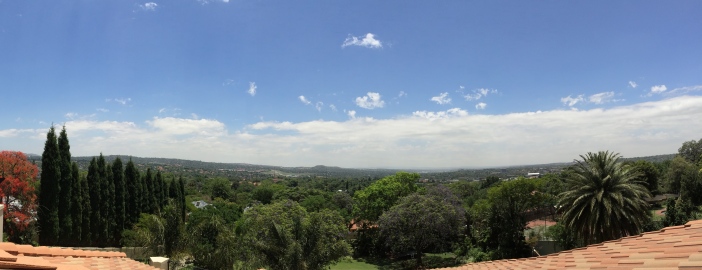
“Trees [speak], as clearly as the built environment, of wealth and power” (Dean 2015:164). The narrative of power represents a less obvious story told by trees – yet one that, if thought about, is unquestionable. Trees are seen, whether consciously or unconsciously, as a symbol of class and status. The suburb where I live in Johannesburg is seen as an affluent area, and even though Johannesburg may be the largest urban jungle in the world, this area boasts with an opulent amount of foliage. The further you drive away from this area, the more sparse the trees become.
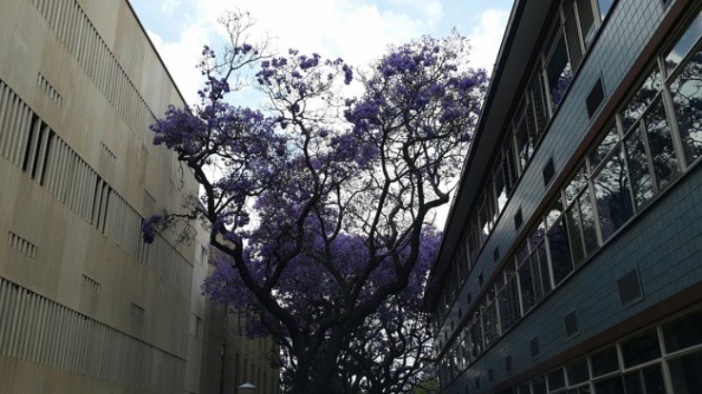
Next is the narrative of heritage, wherein trees embody “associations with human history” (Dean 2015:164). The most obvious example to use is that of the Jacaranda tree in Pretoria. Although it is not an indigenous species, it has become the symbol of Pretoria – the Jacaranda City. Jacarandas have become an integral part of the way people view this city and has inspired traditions and superstitions (believing you will pass an exam if a flower falls on your head). Although the trees only bloom in October, their presence looms in this city as they line the streets of nearly every suburb. They have become as much a part of Pretoria’s heritage as the Voortrekker Monument.
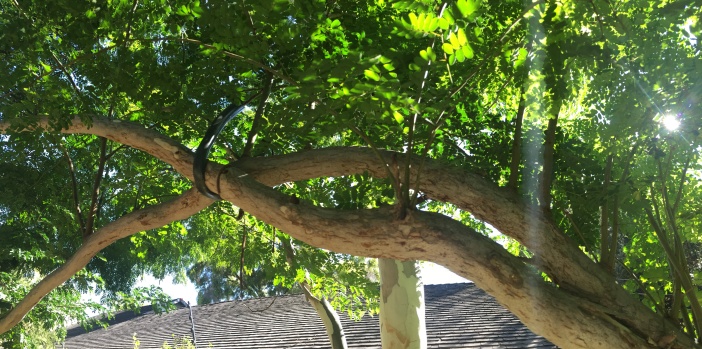
In contrast with the above-mentioned narratives is the counter narrative of the unruly tree. We as humans forget that we share our space with other living organisms – especially trees. Trees and plants have a respiratory function, they are thus undoubtedly alive. This sharing of space creates tension and it is often worsened by humans trying to exert power and control over nature. The garden of my house in Pretoria is lined with trees, and the branches kept breaking the electric fencing lining the yard. One particularly pesky tree was cut down, but in removing the roots the wall adjacent to the tree was cracked. It was then decided that the remaining branches that posed a problem would be bound so that they grow away from the fence – as in the photograph above.
Photo-elicitation
I met with three people from three different generations to discuss these tree narratives and hear the stories they have to tell. First was Daniel Hall, a good friend of mine. We met for coffee and after his responses I decided we should sit together and type them out (as Daniel speaking), because if I had to paraphrase it would waste the grandeur of his responses.
Trees as narrative of service:
The northern slopes of the Magaliesburg play host to a vibrant mix of flora. This vegetation can become quite problematic to the plot resident like me. Summer Saturdays are spent under the employ of my mother, who has an insatiable pruning appetite. Fast forward several months and the biting winter leaves you in desperate need of a large fire. This is when the piled and dried excess from the previous summers trimming comes into fruition. Every winter is marked by a roaring bonfire. As you stare into the flames a slight thought may cross your mind: trees, in death, provide life giving warmth and in life, respite from the sun’s heat.
Trees as narrative of power:
In the simplicity of my childhood, the complexities of the adult world were obviously lost on me. One observation that I made, however, was that if you wanted to be respected for your material achievements, alongside your large German motor vehicle you needed to have round trees, preferably with a servant’s constant, meticulous attention. Interesting to note, these trees are likely never indigenous or fruit bearing, simply ostentatious and out of place, much like those that require plants to validate their social position.
Trees as narrative of heritage:
A tree, intrinsically, is an object of heritage. Planted by chance or plan, trees provide their foliage, fruits and fibres without discrimination. Some of my most vivid, happy memories take place within my parent’s orchard. The produce fills the fruit baskets of countless families and the hearts of those that pass through its gates. Enjoyed by my parents, their children and God willing, their children’s children, the fruit orchard at the Hall residence is already part of the family heritage.
The counter narrative of the unruly tree:
Thud! Followed by “aaaah, shit” (Daniel’s words, not mine) as another avocado dented my car. When visiting a friend’s house, the only place to park was underneath a generous avocado tree. Unfortunately, its generosity was often not well received and the tree was cut down, its stump poisoned and its wood incinerated in a fireplace. My friend now remorsefully buys avocados from Spar.
The second interview was with both my mother and my father as I knew that their stories combined would be more interesting than simply speaking to one of the two. Both my parents came from down-to-earth, interesting families with a lot of history to share. My father, Michael, is the second eldest of four sons, whilst my mother the eldest with two brothers. Their stories have alway enthralled me and it was a magnificent experience to hear them from a completely new perspective.
Trees as narrative of service:
Growing up, both my parents were fortunate enough to have fruit trees in their yards, even though they were not incredibly wealthy. My father’s family had an apricot tree in their garden and it would bear so much fruit that my grandmother made enough apricot jam to last them until the next year. My father grew tired of apricot jam on his bread, but that tree became an integral part of their lives in providing them with food and fresh fruit from the tree. My mother’s family also had apricot trees in all the yards of the homes where they lived, as well as avocado trees which provided for them through the years.
Trees as narrative of power:
Both my parents remember that in their childhoods the bigger houses on the outskirts of town had rows and rows of trees, some even had full orchards. Both of them were not fully aware of the significance of this at the time, but as we spoke they realised that it was a clear indication of wealth and social status – something they were subconsciously aware of as children but only fully realised now.
Trees as narrative of heritage:
When speaking of heritage, both my parents referred to the Shepherd’s tree. A tree native to southern Africa. They both fell in love with the tree upon seeing it and learning about it while in the bush and it has become a symbol of nature and African heritage for them. The Shepherd’s tree is of great cultural importance to certain ethnic groups in Southern Africa, with many traditions and superstitions surrounding it. The tree itself also delivers a service as it does not burn – making it the safest place to go in a veldfire and it also renowned for its shade.
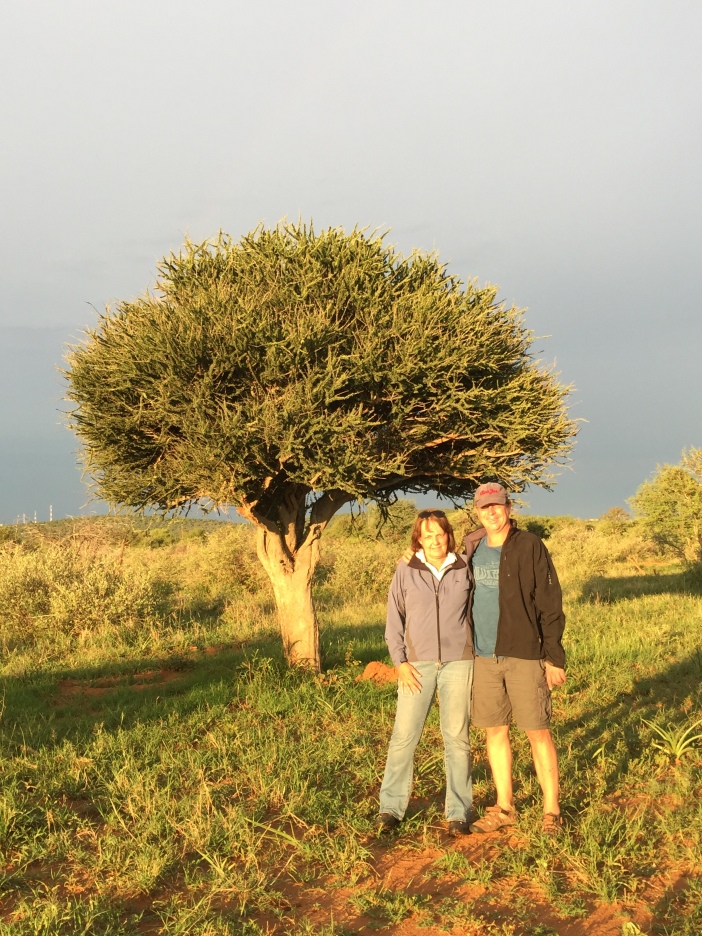
The counter narrative of the unruly tree:
My parents were very exited to speak about this narrative, because they recently had a very unpleasant experience with an unruly tree. The drive way to our house in Johannesburg is lined with trees, and a few weeks ago the roots from one of the trees cracked a sewage pipe at the bottom of or drive way. The tree could not be removed as it would worsen the damage and they had to live with the smell until the pipe was repaired (around the roots of the tree).
The third interview I had was with my grandfather – the best story teller I know.
Trees as narrative of service:
My grandfather remembers how when my father and his brothers were very young they had the only fig tree in the area, and it was constantly ravaged by birds. He would wake up very early each morning to pick the ripe figs off the trees – this became an every day ritual for him before work. He also remembers climbing trees as a young boy living on a farm, seeking shade from the sweltering heat.
Trees as narrative of power:
My grandfather and my grandmother lived in apartments when they were married, and my father and his brothers grew up in apartments for many years. When they moved to their first house it was apparent that the amount of trees had definitely increased. Moving from a less affluent area in the city to the suburbs marked a significant change in their lives. With fruit trees in their gardens, my grandmother started making jam – jam that coincidentally is still fought over in our family until this very day.
Trees as a narrative of heritage:
Books have always been a big talking point for me and my grandfather, a common interest we have always shared. He spoke about Daleen Mathee’s novels – Kringe in ‘n Bos, Fiela se Kind etc. – and how he always felt a deep connection to the Tsitsikamma forests close to Knysna on the West Coast. The Geelhout and Stinkhout trees native to these forests are a very important part of his heritage and the heritage of the area.
The counter narrative of the unruly tree:
As a child my grandfather lived on a farm, taking a small bus to school every day. The dirt road they took was often damaged by flooding and importantly – falling trees. He tells a story of how on a particularly cold morning he was on his way to school when a tree had fallen across the road. The bus stopped to examine the scene and my grandfather decided right then and there that he would not be going to school, jumped off the bus and ran home. He also told a story of friend’s of theirs who’s house was irreparably damaged by a Eucalyptus tree’s roots that damaged the foundation of their house – after they had tried to cut it down on several occasions.

Photographs in interviews are a very successful means of facilitating dialogue. It “[prompts] discussion, reflection and recollection” (Tinkler 2013:174), it brings back memories long forgotten as images are an important point of reference. It brings another level of meaning and depth to any conversation or interview as it builds a kind of trust between the interviewer and the interviewee as they speak of their own personal experiences – a bridge across the initial awkwardness of any interview.
